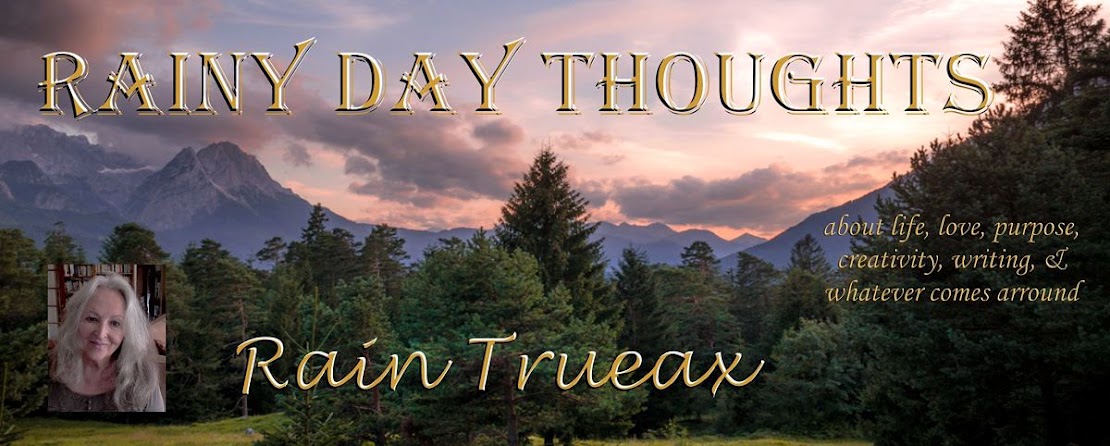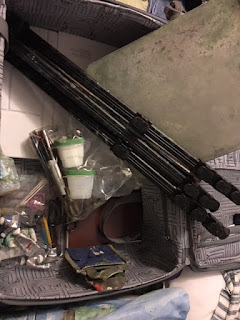 |
| Hulali assisted me by tying off ten locked ends to keep them in place while working on the other side. This is the stage where a flat weaving is made to have four corners. |
The last baskets I made were during my early teens. For several years I made paper Easter baskets for four neighbor kids. The baskets were held together with stapples. They were decorated with paper flowers and animals, filled with decorated hard boiled eggs. While vacationing in Hawaii, I learned of the basket making and woven bracelet class from a park ranger and immediately I wanted to experience and appreciate the pleasure of touching natural fiber in the process of creating. I wanted to try something new.
For the price of the materials, Huilsli teaches traditional Hawaiian weaving classes every Friday and Saturday morning at the headquarters of Kaloko Honokohau National Heritage Park on the Kona Coast in West Hawaii. Preregistration is necessary so Hulali can make kits for each student. For reservations call 329-6881.
Materials from nature are rewarding to my senses. I am often repulsed by perfect manufactured slick plastics. The aesthetic richness and soothing rhythm of the weaving craft permeating every aspect of the lives of my weaver friends. Their immersion and connection to the natural world is an art form transforming the quality of their lives. Even their values!
I foresee a time when more and more people in our consumerist American culture will again value working with natural materials over the convenience of plastic containers and toys. The process of crafting natural materials will tap into our creative selves satisfying a basic need to express ourselves. The bonus will be a more complete and satisfying life styles like my utopian fantasy of Hawaiian culture. I imagine the Hawaiians and their children together. Adults sitting and weaving while children sometimes looking on absorbing the art of living or the children imaginatively entertaining themselves now and then being entertained with their elders' stories and songs in the rhythm of their weaving.
Neither on line nor at the Kona Bay Books was an adequate book to prepare me. A teacher like Hulali is essential to demonstrate just how to distinguish the right side from the back side of the pandanus leaf, just how much mist is required to keep the fiber pliable and not soggy limp, and just how much to pinch or tug. There is no substitute for Hulali's vigilance to catch mistakes early enough to correct them easily. As a beginner I held the basket awkwardly making weaving difficult. I tried to hold the basket as she suggested. Of course the smaller the class, the better she can assist. When I was wove a basket, I was the only student.
From Hulali's class I received a greater appreciation of an under appreciated vehicle for creative expression. What I enjoyed most was the feel of the leaves. The right side of the leaf has a natural sheen. The back has visible, slightly hydrated veins strengthening the basket with a nice supple body as though the leaves are alive. The fiber properties must be respected but with love and care the leaves are amazingly forgiving allowing finesse.
Like in making pots the basket fibers are gleaned from the earth, aged, hydrated to the right consistency, coaxed to being pliable with a bamboo straight edge like the wooden potter's rib. Both materials, leaf or clay, are measured exactly, cut and arranged precisely, tightly centered to make a vessel. Both are built up from the bottom. Both have a mind to spread outwards as the sides build upwards. Clay and natural fiber both require a feel of how much to pull inwards until the top of the vessel is reached. Turning the lip is critical and difficult. The shaping of the body is the most rewarding. The final stage included pushing in and pulling out the body in both. Love was the pinching pushing and pulling down the lip to make a nice tight edge. The diagonal spiraling directions of the plated weave allows for shaping reminding me of the spiraling movement of clay on a potter's wheel. The dampened slightly misted leaves slip against one another just as the molecules of clay do so in shaping. When pulling up the wall and later shaping a pot on a potters' wheel, the water makes the vessel pliable and strong holding their shape.
The properties of the materials of both also reminds me of the way clay can imitate fabric. In both wheel thrown and handbuilt clay the softness of the natural convex shape is like the basket's body. The tendency of both clay and pandanus is to flare like a trumpet at the lip. Also like clay the woven pandanus fiber leaves behind a story of every touch. In my inxperience the story is one of struggle.
What took the longest for me was tucking in the loose ends to finish the basket. I recalled my weaving friends who were always so patiently finishing their weaving. No final tucks for clay vessels.
I came into this class careless about craftsmanship. But I soon learned that each stage whether it is a basket or a bracelet, requires correct tightness from the start with consistent rhythm to the end. The bracelet furthered my appreciation of the fiber because it feels so good hugging my arm. According to a park ranger who takes regular lessons from Hulali, she never takes her bracelet off and wears it even when she swims in the ocean. Truly amazing pandanus fiber! Only in the tropics, Hulali and islanders do not export the raw material for weaving. At home in Oregon best to collect and use natural fibers growing in Oregon.
I commend the National Park for programs like Hulali's class as a national treasure that will continue to inspire our mix of cultural exchange for a brightly satisfying future for those who will it.














